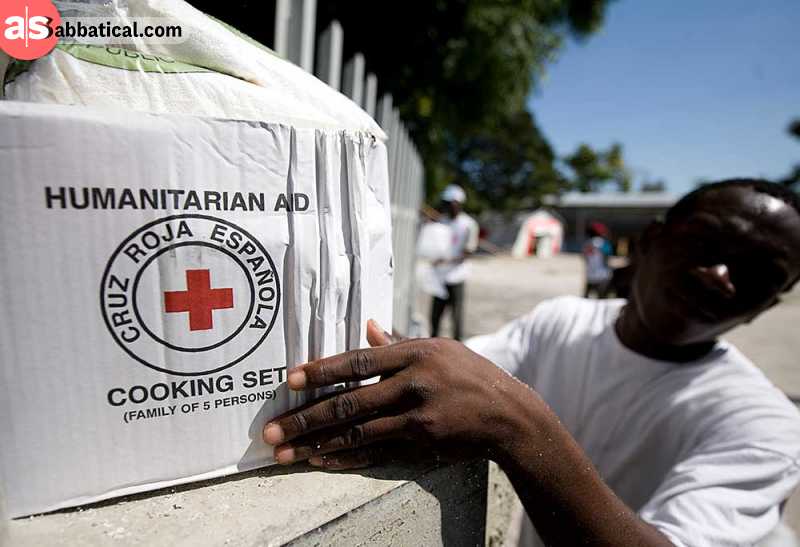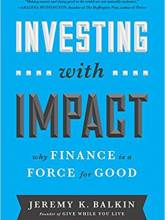Humanitarian Aid and What's Wrong With It: Crisis Caravan
You see terrible things happening around the world and want to help those in crisis. But how? Here come the humanitarian aid organizations in the picture.
But not all organizations do what they say they do; most have become commercial organizations whose only motive is profit. And there are other reasons too, which affects the extent of impact your donations can make.
Yes, humanitarian aid means helping those who are suffering but many organizations fail to do so.
In her book, Linda Polman enlists the various causes responsible for the failure of humanitarian aid and also the reasons why foreign aid is bad. She is a journalist who has over a decade of experience reporting from war zones and witnessed how the organizations function.
In the book – The Crisis Caravan – she also talks about the challenges faced by a humanitarian aid worker at the ground level. Linda also highlights the adverse effects of foreign aid on developing countries and the reality of such donations.
Listen to the summary at Blinkist or listen to the book at Audible.
Humanitarian organizations are commercial

Organizations undertake different types of humanitarian aid activities depending on the situation. These activities include providing food and shelter, education, healthcare and also protection. And all these involve a significant amount of money donated by individuals, corporate houses, government, and other non-profit organizations.
Read more: How Inequality in the World is Measured
But the world has changed since the inception of Red Cross. Red Cross is one of the first organizations someone thinks of when giving examples of humanitarians. The modern organizations though are active only if they can get profits. The more donation an organization gets, the more are the chances of profit.
One incident took place in Rwanda . After killing a large number of Tutsis, Hutus fled to the nearby refugee camps. Those camps in Congo attracted lots of donations, and many African aid organizations took an active part. Not only did Hutus got shelter but also protection and could operate from there.
. After killing a large number of Tutsis, Hutus fled to the nearby refugee camps. Those camps in Congo attracted lots of donations, and many African aid organizations took an active part. Not only did Hutus got shelter but also protection and could operate from there.
And when an Irish organization cut their aid, another agency grabbed the opportunity. The humanitarian organizations choose which crisis they should invest in, by the attention it gets. It’s possible that many groups are competing to aid one area of crisis while other regions receive none. And it happens.
The more attention a crisis gets, the more are the donors. And how to get more (and more) donors? By talking to the media and let media speak on their behalf.
They manipulate the media

Not everyone goes to the area of crisis to check the status of humanitarian aid. People instead rely on the media to keep them updated. But who would help if even the media broadcasts wrong information, intentionally or unintentionally?
Read more: All About the Future Africa
Taking the example of the Rwanda case again; where cholera broke out in the camps. Many journalists covered this story, and the organizations took it as an opportunity for more donations.
What did they do? They reported numbers higher than the actual deaths due to cholera. They included those deaths too which happened due to violence in the camps. Press conferences took place, and funds (or donations) started pouring in.
Not only do the humanitarian organizations report fake figures, but they also take journalists into confidence, help them and get publicity in return. Journalists, at times, also get a feeling of bonding for organizations or certain people in there which leads to biased reporting.
It’s complicated in conflict areas

Not all humanitarian organizations think only money, some of them do provide aid to people. But providing humanitarian aid in areas of conflict isn’t always easy. Organizations, at times, have to negotiate with local armed groups.
In Sri Lanka , post-tsunami, Caritas International had to discuss terms with the Tamil Tigers. For each part of the aid Caritas imported, they had to give 25% to the Tamil Tigers. It increased their cost of operation and thus, affected the re-establishment of the affected area.
, post-tsunami, Caritas International had to discuss terms with the Tamil Tigers. For each part of the aid Caritas imported, they had to give 25% to the Tamil Tigers. It increased their cost of operation and thus, affected the re-establishment of the affected area.
In another incidence, Armed Serb forces blocked the roads during the war times in Yugoslavia. UNHCR then had to give them 30% of the supplies. So, one of the adverse effects of foreign aid is that they end up funding those armed forces and help them grow.
Even if the aid organizations don’t have to negotiate they may subcontract to local organizations who are on friendly terms with the people. They source local help, and with this multi-level approach much of the aid end up as profit-margins and overheads. It’s an example of what happened in the Taliban controlled Afghanistan .
.
Read more: The Art of Humanitarian Negotiation
The donations received as humanitarian aid was distributed to smaller organizations, which further divided it and not much was left in the end. And because of the fears of the Taliban, the agencies couldn’t go out and keep a ground check on the money spent.
Unqualified humanitarian aid

 is that there are a lot of inexperienced and unqualified people carrying out these tasks.
is that there are a lot of inexperienced and unqualified people carrying out these tasks.And last but not least, one of the reasons why organizations fail is carrying out of humanitarian aid jobs by inexperienced people. With the aim of helping people, many start their services and also set up small groups of interested people. But not all those who choose humanitarian career paths are fit for the job.
One such reference can be taken from the camps in Sierra Leone . People took war victims child amputees to the US to get them better medical treatment. But it did no better as they already were receiving appropriate medical services. Moreover, those children were now separated from their family which in turn, did more harm.
. People took war victims child amputees to the US to get them better medical treatment. But it did no better as they already were receiving appropriate medical services. Moreover, those children were now separated from their family which in turn, did more harm.
So, what should we do? Should we go to the war zones ourselves and help those who are in need? Well, it’s not possible for everyone who wants to help. If you want your help to reach the intended –
- Research on the organizations before arriving at a decision.
- Check how they spend the money.
- And then donate.
















